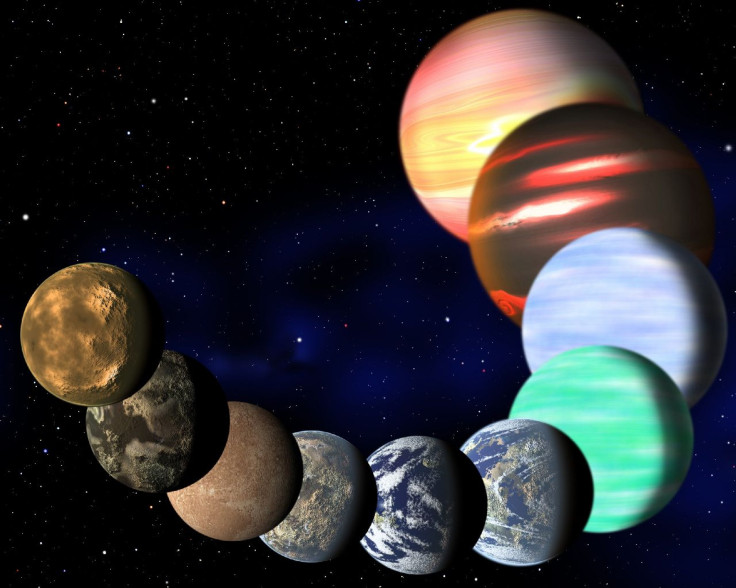Another Earth Outside The Solar System? Kepler Spots Possible Alien World In Zone That Could Support Life

NASA’s Kepler space telescope has spotted what could be the most Earth-like planet outside our solar system yet found.
The planet candidate, known for now as Kepler Object of Interest 172.02, or KOI 172.02, has a radius of about 1.5 times that of Earth's, placing it in the category of suspected “super-Earths.” It completes a trip around its star every 242 days. What makes KOI 172.02 especially exciting is that it lies within the habitable zone of its star -- a G-type star, like our own sun. That means that liquid water and, by extension, possibly life-supporting conditions, could exist there.
"This was very exciting because it's our [first] habitable-zone super Earth around a sun-type star," Kepler astronomer Natalie Batalha said on Tuesday at the 221st meeting of the American Astronomical Society, according to Space.com.
KOI 172.02 is just one of four newly identified super-Earth-sized planets among the 461 new planet candidates recently discovered by the Kepler mission.
The Kepler telescope looks for exoplanets by measuring changes in brightness for more than 150,000 stars as it looks for signs of a “transit,” the term used for when a planet passes in front of its host star. Before NASA can peg something as a potential candidate, Kepler has to find at least three transits first.
KOI 172.02 and the other 460 candidates will still have to be vetted further to eliminate false positives. At the moment, there are just 105 confirmed exoplanets in the Kepler catalogue. But NASA keeps finding more and more evidence of smaller planets and multiple planet systems beyond our solar system.
"The analysis of increasingly longer time periods of Kepler data uncovers smaller planets in longer period orbits -- orbital periods similar to Earth's," Kepler mission scientist Steve Howell said in a NASA release on Monday. "It is no longer a question of will we find a true Earth analogue, but a question of when."
The latest analysis of Kepler data shows that about 17 percent of stars in the Milky Way have an Earth-size planet orbiting closer than Mercury orbits our sun. Given that our galaxy has about 100 billion stars, that would mean there are at least 17 billion Earth-size planets out there.
The total number of all planets in our galaxy could be even more colossal. Last week, researchers examining Kepler data hypothesized that the Milky Way could have at least 100 billion planets , both Earth-size and not -- about one satellite for every star.
Last March, European researchers extrapolated from their observations of 102 red dwarf stars to estimate that there were tens of billions of planets that could potentially support life. They calculated that around 41 percent of red dwarfs contain at least one "super-Earth," with a mass between one and 10 times that of our planet, in their habitable zones.
We don’t even have to look too far to find candidates for habitable planets -- in December, a University of Hertfordshire-led team said they might have found a habitable planet 12 light-years away, circling the star Tau Ceti, another G-class star. The scientists found evidence suggesting that the star is being pulled upon by five planets that are anywhere from two to six times as massive as Earth. The fourth planet, known for now just as planet e, seems to lie in the habitable zone.
© Copyright IBTimes 2024. All rights reserved.




















